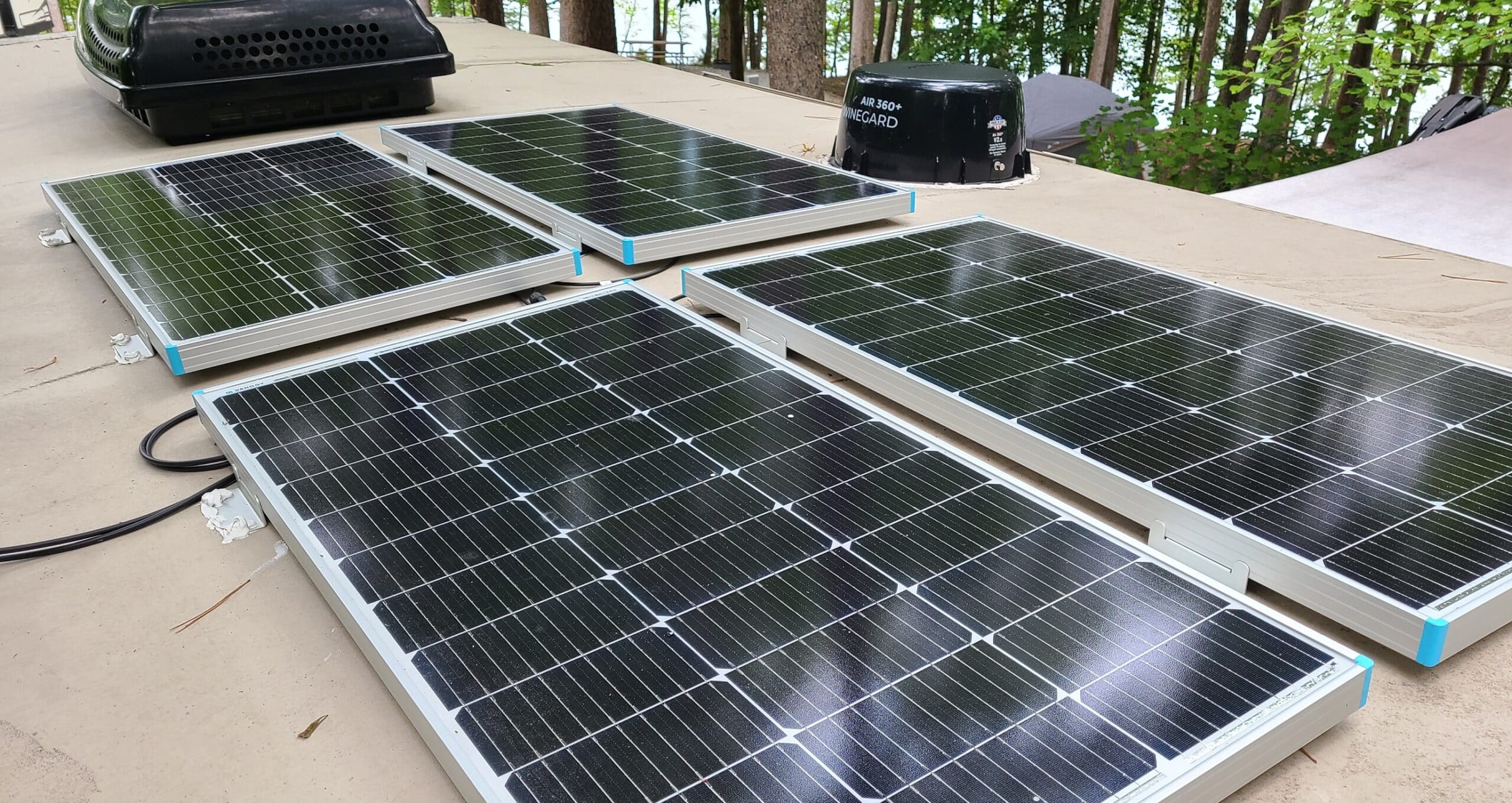We’ve all seen those guys with a million watts of RV Solar panels on their roof, and 30 batteries in the belly of their camper boasting how they can run both of their AC units and an air fryer while they watch TV in their rig. This article isn’t about one of those systems, I’m not that guy.
My Wife and I have been living on the road full time in our RV for about a year now. When we first got started we had more kinks to work out of our system than we thought we did, and spent most of our time bleeding money in fuel and campground costs.
We tried our hand at Boondocking at a Harvest Hosts one night, and at 2 a.m. the low battery alarm started going off. Hell we didn’t even make it one day, we left our campground with full hookups at 9 a.m., got there at noon, and 14 hours had no juice left.
Well now we need to figure out a way to keep enough charge in the batteries so that I might be able to sleep until sunrise. We hadn’t done ANY research at all on RV Solar, but then I came across the 400 Watt RV Solar Kit from Renogy.
It appeared to have everything we needed to throw some panels on the roof, and keep our batteries charged enough to be able to use the lights in the kitchen and keep our low battery alarm from going off, so we ordered it.
We ordered it from Amazon, and it showed up at my buddies house in 3 days, and it did come with ALMOST everything we needed to complete the install. The only things it did not come with was the roof sealant, and a pass through for the wires to go from the roof down and into the RV, but we ordered those as well, so now we were ready to go.
You can watch my short Installation video here: Renogy RV Solar Kit Install
The RV Solar kit from Renogy comes with Four 100 Watt Solar Panels, a 10 amp inline fuse, panel combiner plugs, cables to go from the roof to the charge controller, a 40 amp MPPT Charge Controller, a Battery fuse, a Bluetooth antennae so you can monitor your power production with an App on your phone, and cables to go from the controller to your batteries.
The directions for install were pretty straight forward, except how the panels themselves should be wired together on the roof. There are a few options for putting them together, and I will admit I did it ‘Wrong’ the first time. With solar panels you have the option of wiring them in Series, Parallel, and Series-Parallel.
Looking at the parts on hand, and the included combiner plugs, I assumed they needed to be wired in Parallel. Which is when all the Positive cables tie together, and all the Negative cables tie together, then go down to the Charge Controller. When you wire them this way, all of the Amperage from each Panel is added together, and on a full Sun day, will pop the 10 amp fuse.
I replaced the fuse, and rewired them in Series, Positive to Negative, Positive to Negative, Positive to Negative, Positive to Negative, then down to the Charge Controller and everything started working perfectly.
We had 200 amp hours of regular old Deep Cycle Lead Acid batteries from the factory, so we figured that should be enough storage to keep us going. We have a residential fridge in our RV that runs off a 1,500 Watt Power inverter that auto switches ON when we unplug the RV at a campground.
IF we ONLY use the 12 volt lighting, and leave the fridge running like normal, the solar will charge our batteries during the day on a decently Sunny site, and get us through the night with no battery alarms. Realistically that’s all I was looking for, so it was doing what it needed to do, and gets us off grid frequently enough that I WOULD spend the money on it again if we were to do it all over again.
Touching on that subject, of If we had it to do over again, There are things I would do differently, like changing out the batteries, and looking into how to size the system to get a certain number of hours out of it. BUT…
Based solely on, whether or not this system performed as I imagined it would, Yes, it did.
The kit came with most everything needed for the install, It does charge the batteries during the day, and the installation was straight forward. If you are looking for an easy RV Solar option, that can get you off grid for the weekend without a lot of complicated math, this is it. Just make sure you get the roof sealant, and a pass through, and it couldn’t hurt to grab a spare fuse to throw in a junk drawer just in case.
Stay tuned for my follow up article on comparing our RV Solar vs Generator, and how to size an RV Solar System to get you through an entire day of clouds and rain.



